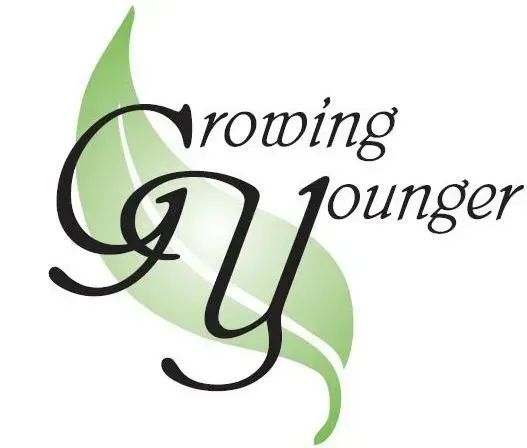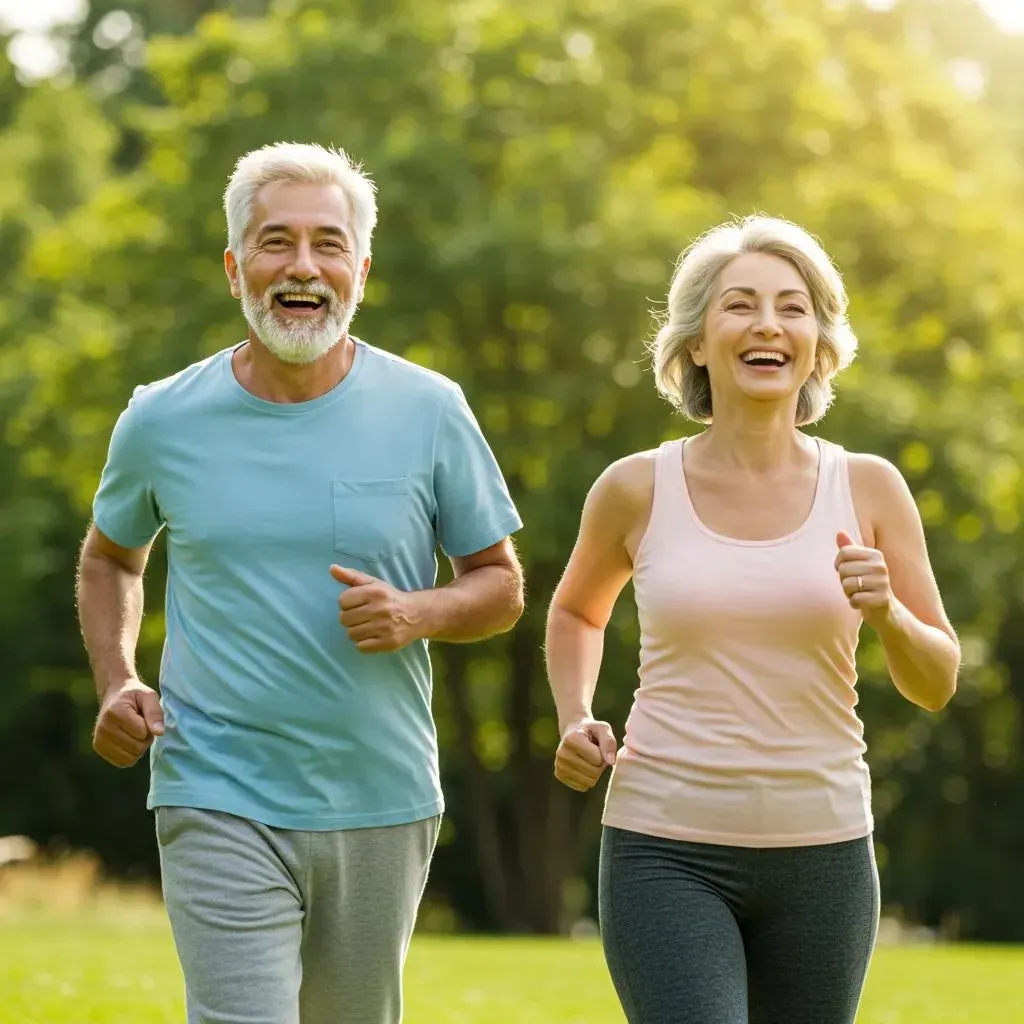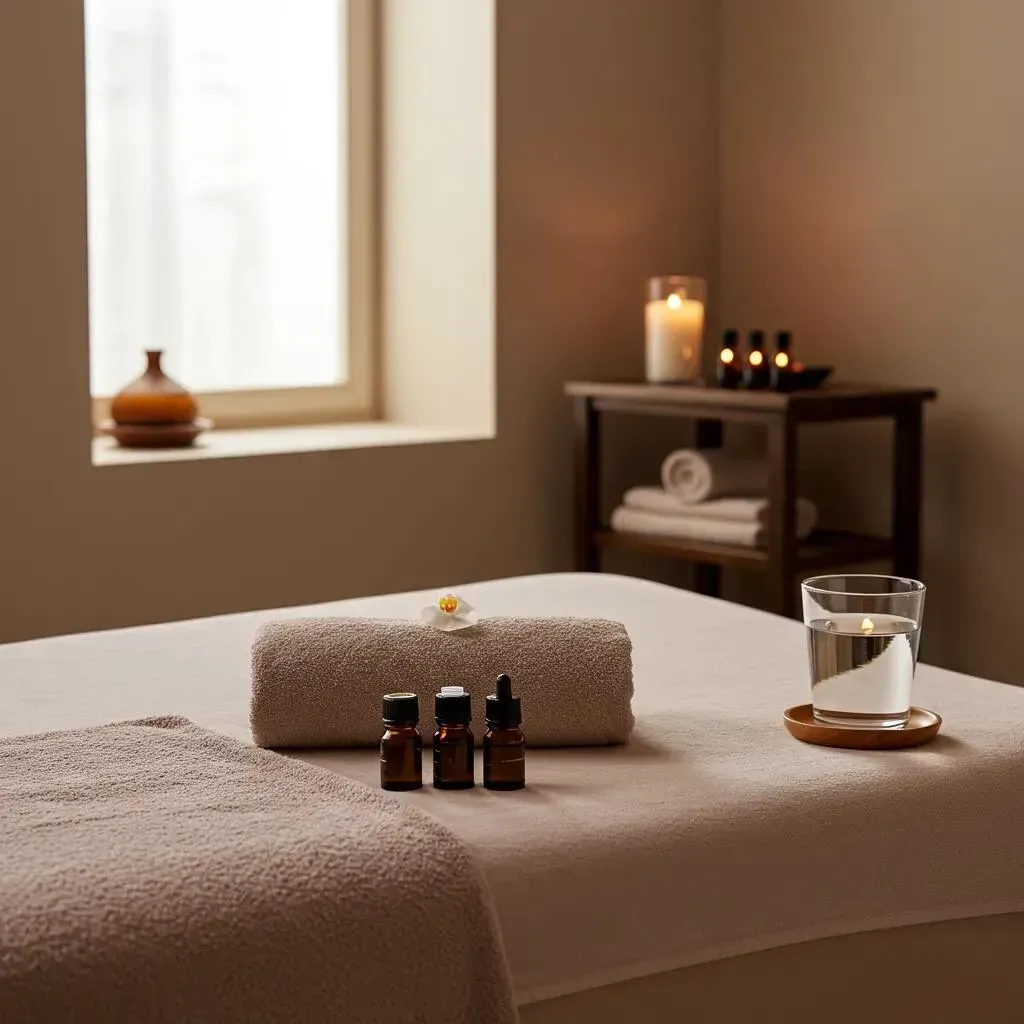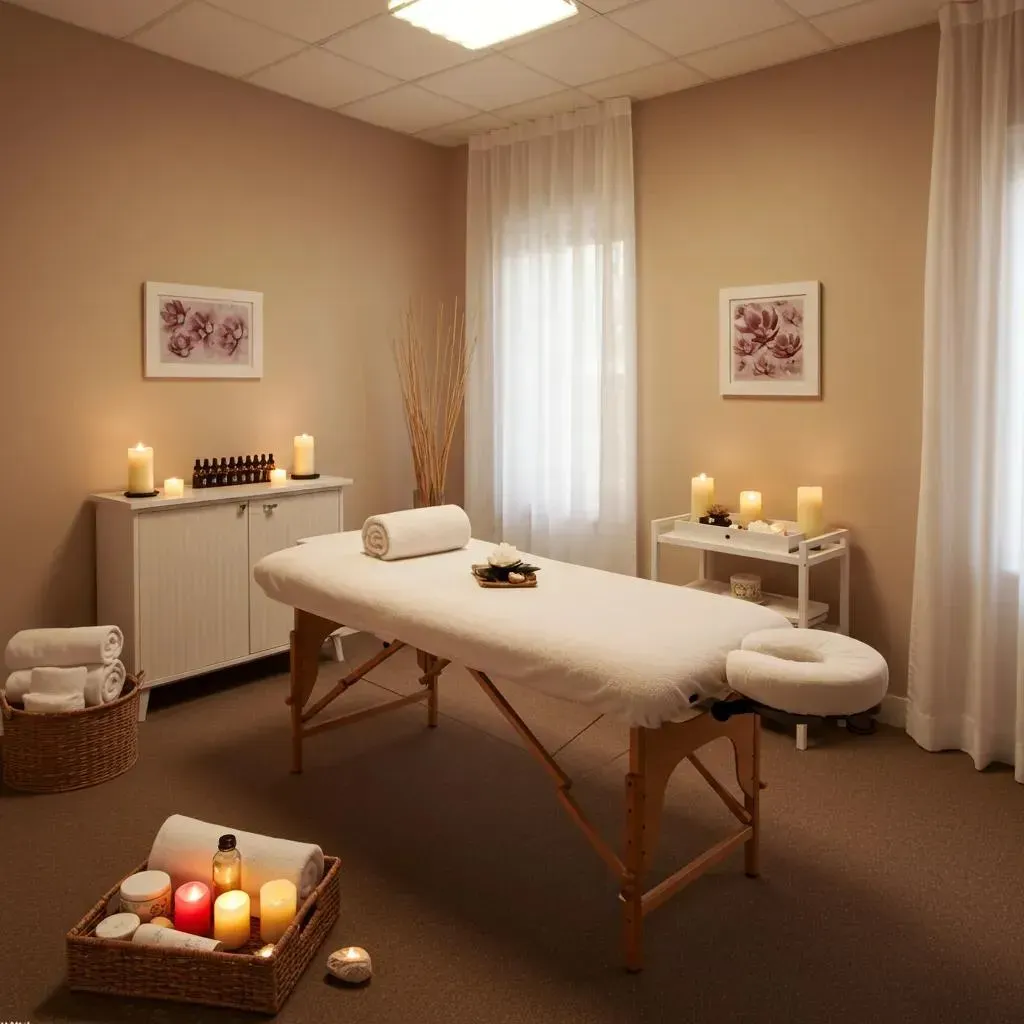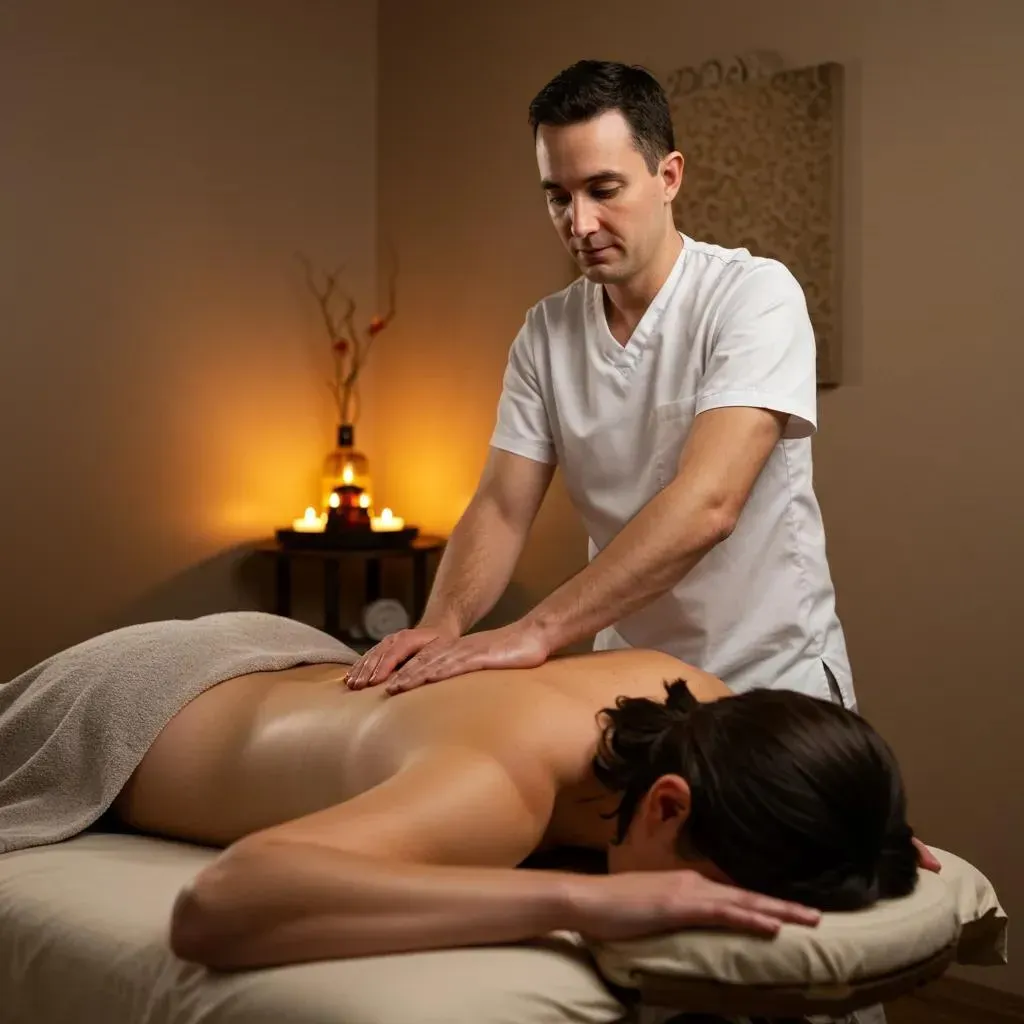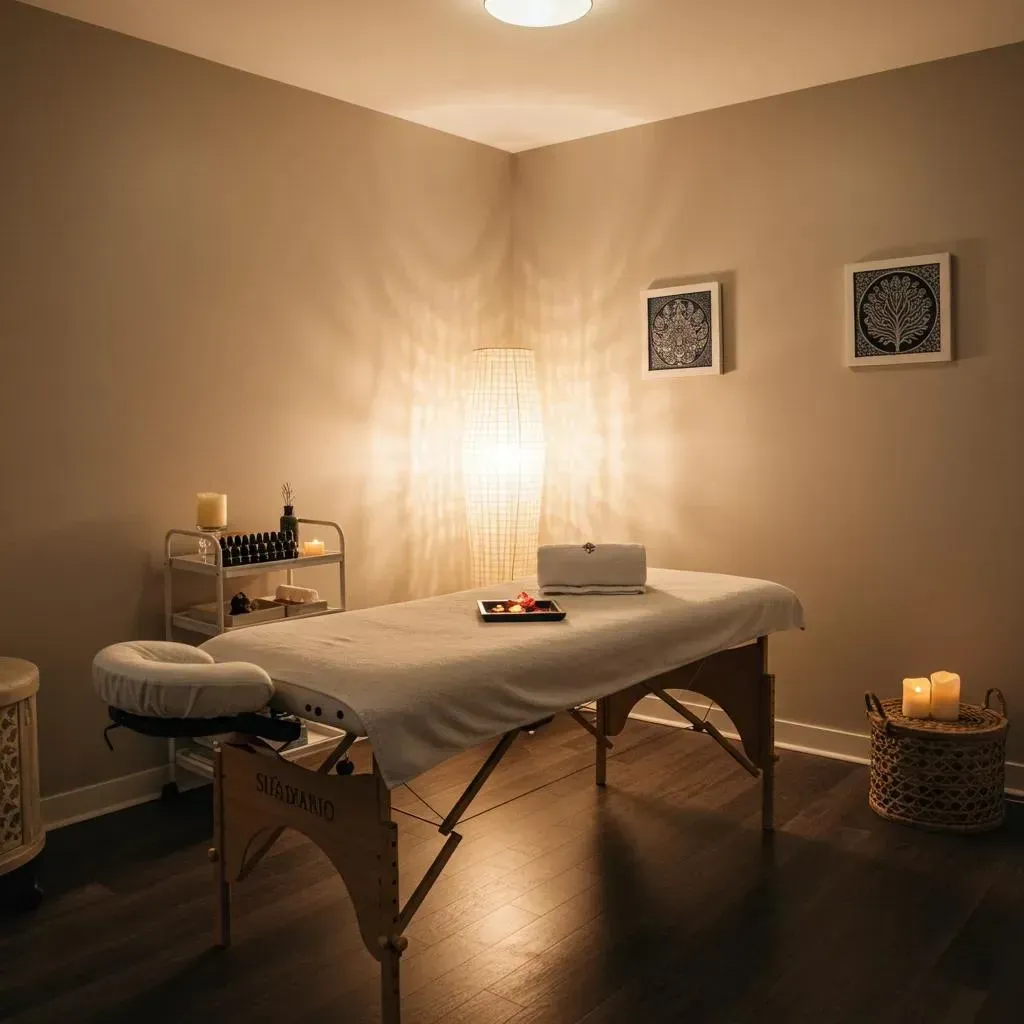Boost Skin Elasticity Naturally with Human Growth Hormone
Human Growth Hormone Benefits for Skin Elasticity: How HGH Therapy Enhances Skin Health and Rejuvenation
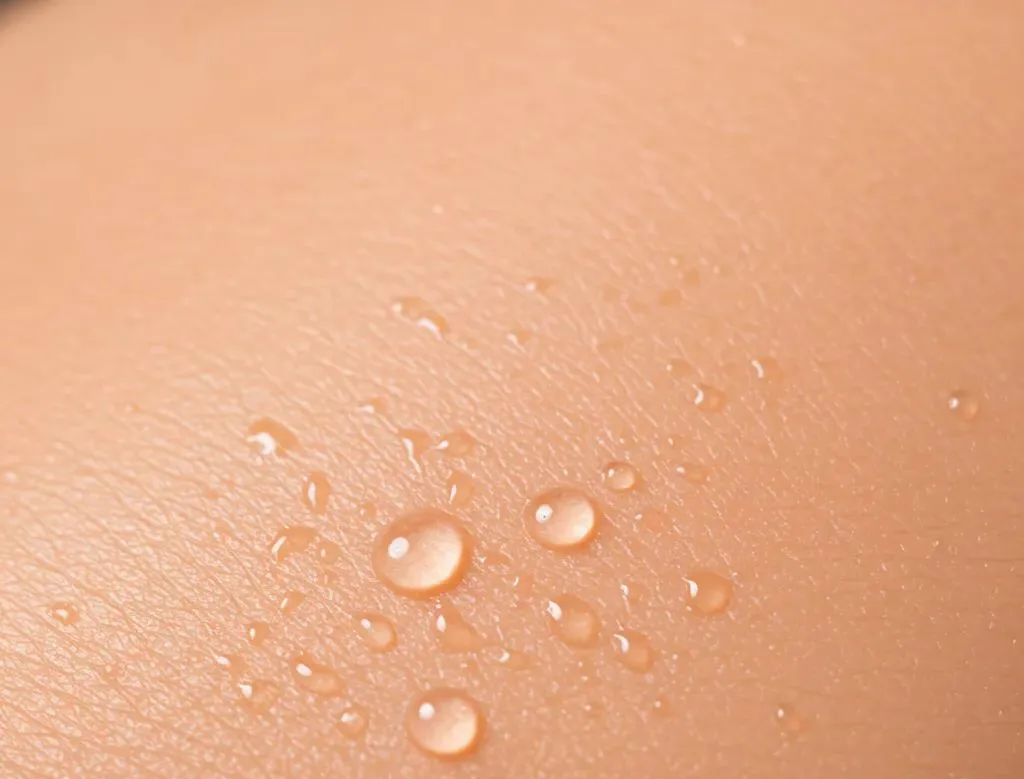
Human Growth Hormone (HGH), also called somatotropin, is a systemic peptide hormone that supports skin structure by stimulating IGF-1–mediated fibroblast activity and extracellular matrix remodeling. This article explains how HGH influences collagen, elastin, and hyaluronic acid production, and why restoring balanced HGH levels can translate into measurable improvements in skin thickness, elasticity, hydration, and repair. Readers will learn the cellular mechanisms linking HGH to dermal matrix restoration, realistic timelines for visible skin changes, procedural details for bioidentical pellet implantation, candidate screening criteria, safety and monitoring practices, and how HGH integrates with other aesthetic treatments. The guide also compares HGH therapy with Botox, dermal fillers, and resurfacing procedures to clarify complementary strategies for comprehensive rejuvenation. Practical sections cover administration expectations, monitoring protocols, and how Madison, AL residents can access qualified HGH pellet therapy at a local medical spa.
What Is Human Growth Hormone and How Does It Affect Skin Elasticity?
Human Growth Hormone is a pituitary-derived peptide that regulates growth and tissue maintenance through direct and IGF-1–mediated pathways, and it affects skin elasticity by activating dermal fibroblasts and matrix synthesis. Mechanistically, HGH increases IGF-1 levels which stimulate fibroblast proliferation, collagen deposition, and matrix remodeling—processes essential for maintaining dermal tensile strength and elasticity. Restoring physiologic HGH levels in adults with deficiency supports thicker dermis and more resilient extracellular matrix while improving the skin’s capacity to retain water. The next sections break down the specific roles HGH plays in collagen and elastin synthesis, its effects on hyaluronic acid and hydration, and why age–related declines in HGH correlate with visible loss of skin firmness.
What Role Does HGH Play in Collagen and Elastin Production?
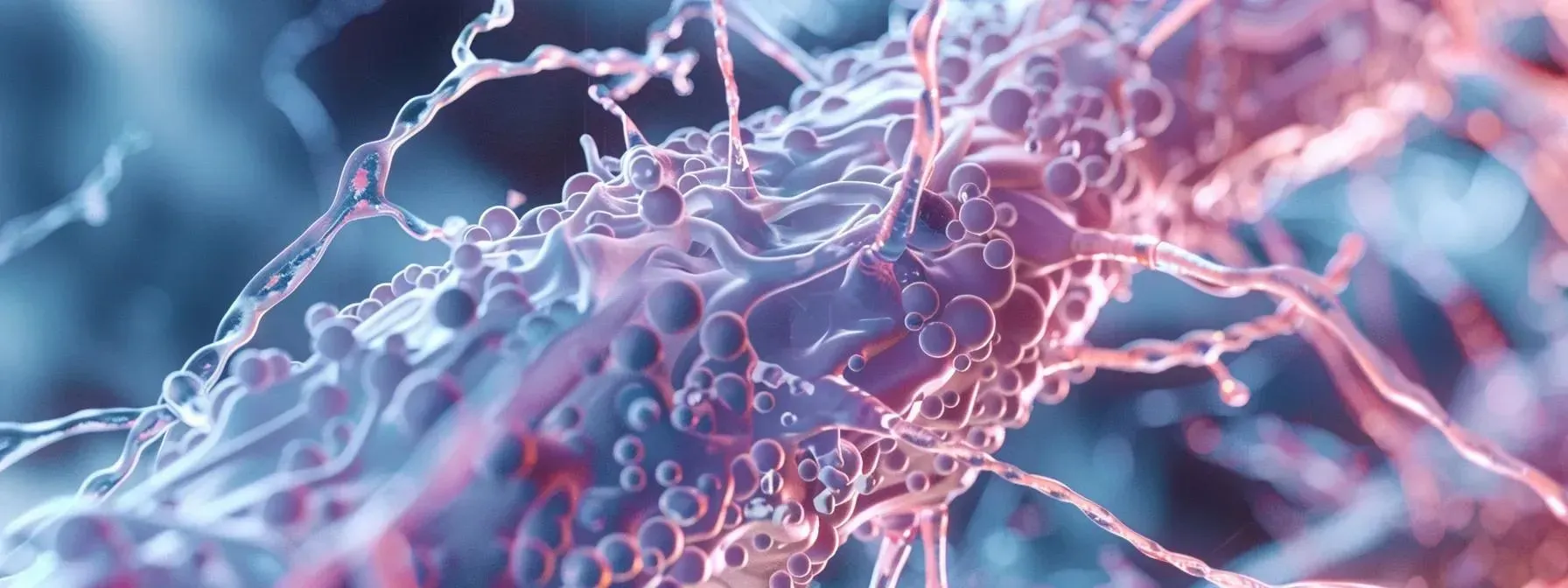
HGH drives collagen and elastin production primarily by increasing IGF-1 signaling and directly stimulating dermal fibroblasts to synthesize extracellular matrix proteins. At the cellular level, fibroblasts exposed to HGH/IGF-1 upregulate type I and III collagen gene expression and secrete proteins that scaffold elastin fiber maintenance and repair. Clinically, this translates into improved dermal thickness and tensile strength as collagen fibrils become denser and better organized, while elastin fibers regain some functional elasticity. Recent clinical observations indicate measurable increases in dermal matrix markers after restoring balanced hormone levels, supporting the mechanistic rationale that HGH can reverse elements of age-related dermal depletion. This increase in structural proteins naturally leads to better hydration and reduced surface wrinkling, which we will explore next.
How Does HGH Influence Hyaluronic Acid and Skin Hydration?
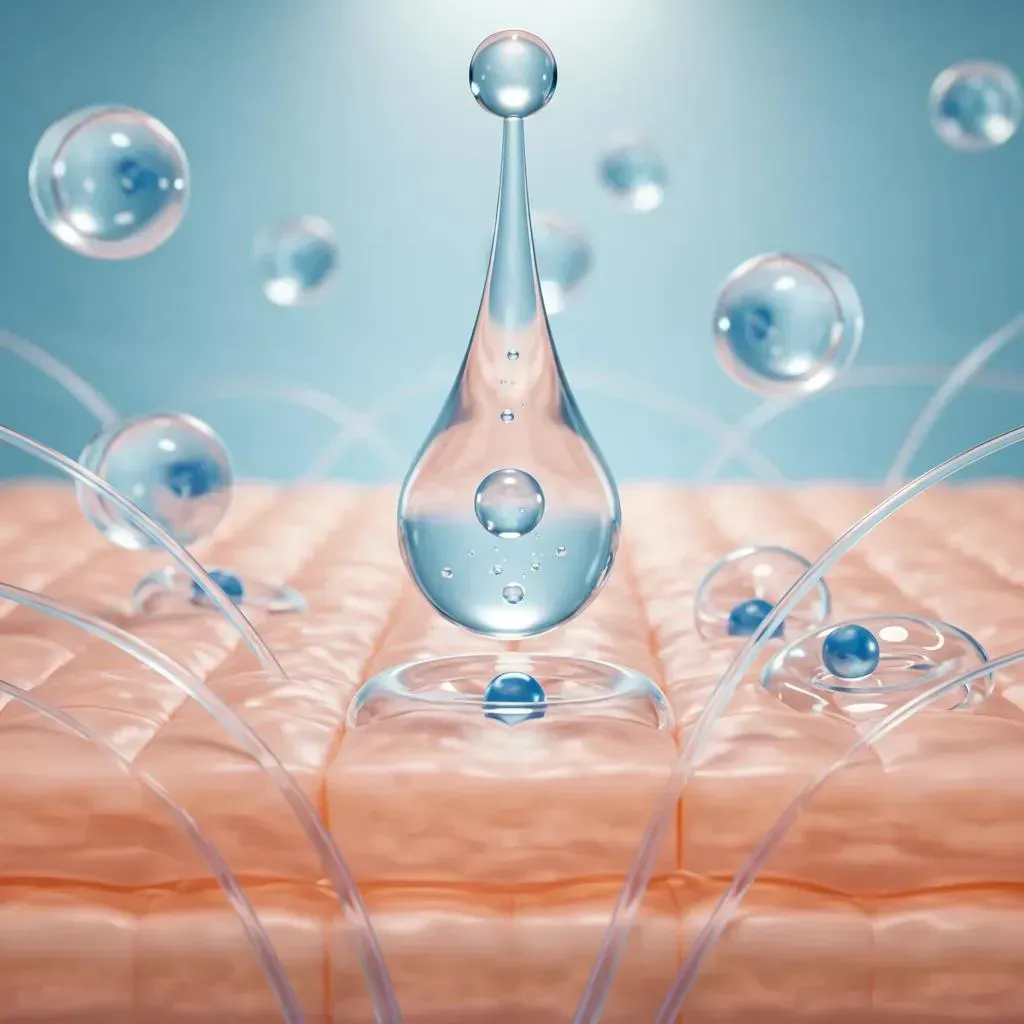
HGH and IGF-1 signaling enhance the dermis’s capacity to synthesize glycosaminoglycans, including hyaluronic acid, through fibroblast activation and upregulation of HAS enzymes responsible for HA production. Increased hyaluronic acid in the dermal extracellular matrix improves water retention, tissue turgor, and skin plumpness, making the skin appear smoother and less lined. Clinically, patients with corrected hormone balance often report improved skin hydration and reduced dryness within weeks, followed by progressive structural changes over months. Because HA supports both mechanical cushioning and biochemical signaling in the dermis, HGH-driven HA synthesis complements collagen and elastin restoration for holistic improvement in elasticity. The relationship between hydration and firmness sets the stage for understanding how age-related HGH decline undermines these systems.
Why Does HGH Decline with Age Impact Skin Firmness?
HGH secretion decreases progressively with age, resulting in lower systemic and local IGF-1 activity and reduced stimulation of fibroblast-mediated matrix renewal; this decline contributes to the commonly observed thinning, laxity, and fragility of aging skin. As HGH levels fall, collagen turnover slows, elastin repair becomes less efficient, and hyaluronic acid synthesis diminishes, leaving the dermis less able to recover from environmental damage and microtrauma. These molecular changes manifest as reduced skin thickness, deeper wrinkles, and slower wound healing, which together drive loss of elasticity and visible aging. Recognizing the timeline and physiological consequences of HGH decline clarifies why targeted hormone restoration may be a rational component of anti–aging strategies, which we examine in the following benefits section.
Research indicates that both GH excess and deficiency states can lead to distinct skin manifestations, highlighting the hormone's significant role in dermal health.
What Are the Key Benefits of HGH Therapy for Skin Elasticity and Anti-Aging?
HGH therapy can deliver multiple clinically relevant effects on skin structure and appearance by restoring hormonal signaling that supports matrix renewal, hydration, and repair. Restoring physiologic HGH levels primarily enhances collagen and elastin deposition, improves dermal thickness and tensile strength, accelerates repair processes, and increases hyaluronic acid–mediated hydration. These tissue-level changes translate into firmer skin, reduced fine lines, improved texture, and faster recovery from minor injuries or dermatologic procedures. The following table summarizes the relationships between core skin components, HGH’s effect, and the resulting clinical benefit to provide a concise comparison for clinicians and patients.
The effects below highlight why HGH is considered a systemic, regenerative complement to localized cosmetic procedures.
| Skin Component | Effect of HGH/IGF-1 | Clinical Benefit |
|---|---|---|
| Collagen (Type I/III) | Increased synthesis and improved fibril organization | Greater dermal thickness and tensile strength |
| Elastin fibers | Enhanced maintenance and reduced fragmentation | Improved skin recoil and reduced sagging |
| Hyaluronic acid | Upregulated HA synthesis via fibroblasts | Better hydration, plumpness, and reduced superficial lines |
| Dermal matrix remodeling | Accelerated ECM turnover and repair | Faster healing, improved scar quality, and texture improvement |
This comparison clarifies how HGH’s multi-component action produces durable structural changes rather than only temporary surface effects. Below is a practical list summarizing the primary aesthetic benefits patients commonly seek when considering HGH therapy.
- Improved dermal thickness and firmness through collagen restoration.
- Increased elasticity and reduced sagging from elastin support.
- Enhanced hydration and plumping via greater hyaluronic acid content.
- Faster repair and improved post-procedure recovery after skin injuries.
These benefits explain why some patients pursuing anti–aging results choose hormone–based regenerative approaches alongside topical and procedural care. For those in Madison, a local option exists to evaluate suitability and begin guided therapy, which is described in the next paragraph with clinic-specific next steps and a free consultation offer at the Growing Younger Clinic.
Growing Younger Clinic offers individualized evaluation and bioidentical HGH pellet options for patients interested in addressing skin elasticity, and the clinic provides free consultations with certified on–staff doctors to determine appropriate treatment pathways. During a consultation, physicians review symptoms, medical history, and relevant labs to develop a personalized plan focused on physiologic hormone restoration and skin outcomes. The clinic’s approach emphasizes medical oversight, measurable goals, and integration with other aesthetic strategies when appropriate, helping patients understand expected timelines for improvement. If you are considering HGH therapy for skin elasticity, a guided evaluation at Growing Younger Clinic can clarify candidacy and next steps.
How Is HGH Pellet Therapy Administered for Skin Rejuvenation?
HGH pellet therapy uses small, bioidentical hormone pellets implanted subcutaneously to provide steady, physiologic hormone release that supports systemic tissue repair and dermal regeneration. The pellet implantation procedure is brief and performed under local antiseptic technique; pellets are typically placed in a fatty area such as the hip or gluteal region, where they dissolve slowly and release hormone over time. Steady hormone delivery avoids the peaks and troughs associated with periodic injections and permits sustained stimulation of IGF-1 signaling in target tissues, including skin. The next subsections define pellet therapy, outline expected duration and visible timelines, and describe what patients can expect during and after the procedure.
What Is Bioidentical Hormone Pellet Implantation?
Bioidentical hormone pellet implantation delivers hormones chemically identical to human HGH in a compounded pellet that is inserted beneath the skin to provide continuous release; this differs from injections that create intermittent systemic spikes. Pellets are formulated to match physiologic hormone structure, aiming to restore balanced signaling rather than supra–physiologic dosing, and dosing is individualized based on medical assessment and lab results. The implantation site is chosen for comfort and minimal visibility, and local anesthetic is used to minimize discomfort during placement. Because the delivery is steady, this method can support sustained dermal fibroblast activity and matrix remodeling over weeks to months, which helps explain the progressive improvements often seen in skin texture and elasticity.
How Long Do HGH Pellets Last and When Are Results Visible?
Pellets typically provide a sustained release over several months before needing replacement, with common clinical dissolution ranges observed between three and six months depending on formulation and individual metabolism. Early subjective improvements in skin hydration and energy can appear within 4–8 weeks, while measurable structural changes—such as increased dermal thickness and reduced wrinkle depth—usually emerge over 3–6 months as collagen and elastin remodel. Peak tissue-level benefits often align with the active pellet window, which is why follow–up scheduling is important to maintain consistent physiologic levels. Understanding this timeline helps set realistic expectations for patients and guides coordination with other aesthetic procedures to maximize synergistic outcomes.
| Aspect | Typical Range | Clinical Note |
|---|---|---|
| Pellet lifespan | 3–6 months | Varies by formulation and metabolism |
| Onset of subjective changes | 4–8 weeks | Hydration, energy, mild texture shifts |
| Onset of measurable structural change | 3–6 months | Dermal thickness and wrinkle reduction |
| Follow-up frequency | Periodic check at 4–12 weeks | Labs and symptom review guide re–implantation |
This table summarizes typical pellet behavior and monitoring cadence; the following subsection explains the patient experience before, during, and after implantation.
What Should Patients Expect During and After HGH Pellet Therapy?
Patients can expect a short office visit for pellet insertion performed under local anesthetic with a small incision and placement into subcutaneous tissue, usually resulting in minimal downtime and straightforward wound care. After the procedure, mild soreness or bruising at the site is common and typically resolves within a few days; clinicians schedule follow–up visits to assess symptom changes and check labs as part of safety monitoring. Over the following weeks, patients may notice improved hydration and skin texture, with progressive structural changes developing across months as the dermal matrix responds to sustained hormonal signaling. Clear communication with the treating physician about expectations, concurrent medications, and any side effects is crucial for safe and effective therapy, and this monitoring approach is emphasized at clinics offering pellet implantation.
Who Is an Ideal Candidate for HGH Therapy to Improve Skin Elasticity?
Ideal candidates are typically adults who have clinical signs or laboratory evidence of adult growth hormone deficiency (AGHD) or who present with symptomatic declines in skin quality, energy, or recovery that correlate with low hormone levels and have no contraindications to hormone replacement. Candidate evaluation integrates symptom assessment, medical history, targeted blood testing, and physician judgment to differentiate true deficiency from normal aging and to rule out conditions that would preclude therapy. Because safety and appropriate indication are paramount, clinics perform individualized risk assessment and monitoring to ensure treatment is both effective and medically appropriate. The following subsections define AGHD skin symptoms, discuss how age and comorbidities affect eligibility, and describe the free consultation process used to determine suitability.
What Is Adult Growth Hormone Deficiency and Its Skin Symptoms?
Adult Growth Hormone Deficiency is a clinical syndrome marked by low endogenous HGH (and often low IGF-1) that presents with systemic symptoms such as decreased muscle mass, increased fat mass, low energy, and dermatologic signs including thin, dry skin, reduced elasticity, and slower wound healing. Skin-specific manifestations often include loss of dermal thickness, more pronounced wrinkling, and diminished resilience when pinched or stretched; these signs, combined with systemic features, raise clinical suspicion for AGHD. Diagnosis typically relies on a combination of clinical assessment and laboratory testing rather than symptom pattern alone, because some skin changes overlap with normal aging and environmental damage. Recognizing these differential cues helps clinicians decide whether hormone restoration is indicated and medically justified, which is described in the eligibility considerations next.
How Does Age and Health Status Affect HGH Therapy Eligibility?
Age and overall health strongly influence candidacy because older adults may have physiologic declines in HGH without pathological deficiency, and certain comorbidities or active conditions (for example, uncontrolled malignancy) can contraindicate hormone therapy; careful medical evaluation is therefore required. Pre–treatment screening generally includes medical history, medication review, and laboratory testing to identify reversible causes of symptoms and to evaluate safety risks. Personalized dosing decisions consider body composition, symptoms, and lab results rather than age alone, and clinicians weigh benefits for skin elasticity against potential risks for each patient. This individualized risk–benefit assessment leads into the practical process of how a free consultation determines suitability at clinics that offer medically supervised HGH therapy.
How Can a Free Consultation Determine Suitability for HGH Therapy?
A comprehensive free consultation begins with a structured medical history, symptom inventory, and review of prior labs or exams, followed by targeted laboratory testing when indicated to measure baseline HGH/IGF-1 and related parameters; this process helps clinicians identify true deficiency versus normal aging. The consultation also discusses patient goals—such as improved skin elasticity or faster recovery—and aligns expectations with evidence–based timelines and safety protocols. When appropriate, the clinician outlines a personalized treatment plan that may include pellet implantation, monitoring cadence, and integration with topical or procedural skin care. For Madison residents, this assessment step is provided as a complimentary consult opportunity at a local clinic that emphasizes physician oversight and informed decision–making.
Growing Younger Clinic offers free consultations where on–staff certified doctors review symptoms, labs, and treatment goals to determine if HGH pellet therapy is an appropriate, medically supervised option for improving skin elasticity. During the consult, clinicians explain testing, expected timelines, and monitoring protocols to ensure informed choices and safe care.
How Does HGH Therapy Compare to Other Anti-Aging Skin Treatments?
HGH therapy operates as a systemic, regenerative approach that targets the dermal matrix and tissue repair pathways, while many common aesthetic treatments act locally to relax muscles, replace volume, or resurface skin. Understanding the mechanisms clarifies when each therapy is appropriate: neuromodulators like Botox address dynamic lines by reducing muscle contraction, fillers restore lost volume and support soft tissue contours, lasers and chemical peels stimulate localized collagen remodeling and improve texture, whereas HGH aims to rebuild structural components systemically. Combining systemic regeneration with targeted local procedures can produce synergistic outcomes—HGH improves the dermal substrate while injectables and devices refine surface anatomy and immediate appearance. The table below compares key treatments to help clinicians and patients select complementary strategies.
| Treatment | Mechanism | Primary Skin Benefits | Notes |
|---|---|---|---|
| HGH therapy | Systemic IGF-1/fibroblast stimulation | Dermal thickness, elasticity, hydration | Best for structural regeneration |
| Botox (neuromodulator) | Muscle relaxation | Reduced dynamic lines | Localized, temporary effect |
| Dermal fillers | Volume replacement | Immediate contouring and wrinkle fill | Localized, duration varies by material |
| Laser resurfacing | Controlled dermal injury → remodeling | Texture, pigment, collagen induction | Localized remodeling with downtime |
This comparison highlights that HGH is not a direct substitute for injectables or devices but can be a foundational therapy that augments and prolongs outcomes from focal procedures. Below are lists that summarize practical differences and combination strategies.
Key differences between HGH and cosmetic injectables:
- HGH targets systemic tissue regeneration by enhancing matrix production and repair.
- Botox provides neuromuscular modulation to diminish dynamic wrinkles.
- Fillers immediately restore lost volume and can mechanically support soft tissues.
Recommended combination and sequencing strategies:
- Establish systemic balance (HGH) to improve dermal substrate before volumizing procedures.
- Use neuromodulators to address dynamic movement once tissue health is improved.
- Schedule resurfacing procedures when dermal repair is robust to maximize remodeling and reduce downtime risks.
These sequencing principles help maximize longevity and aesthetic harmony by pairing systemic regeneration with targeted surface interventions, which also influences safety considerations discussed next.
What Are the Safety Considerations and Potential Side Effects of HGH Therapy?
HGH therapy carries potential side effects that range from mild and transient to less common but more serious events, making medical oversight, proper dosing, and ongoing monitoring essential. Commonly reported, generally reversible symptoms include fluid retention (edema), transient joint or muscle discomfort, and paresthesias such as carpal tunnel–type sensations; these are often dose–related and manageable with dose adjustments. Because systemic hormones can influence metabolic and proliferative pathways, clinicians monitor labs, symptoms, and clinical signs to detect adverse effects early; regular follow–up and individualized dosing reduce risk. The next subsections outline common side effects, how monitoring is typically performed at supervised clinics, and what current research indicates about long–term safety and effectiveness.
What Are Common Side Effects Related to HGH for Skin Health?
Common side effects linked to HGH replacement include mild peripheral edema, joint stiffness or pain, and transient paresthesias; these effects usually reflect dose sensitivity and improve with dose modification or temporary cessation. Less commonly, patients may experience changes in glucose tolerance or sleep–related breathing if predisposed, emphasizing the need for baseline medical assessment. Clinics instruct patients to report persistent swelling, significant pain, new neurological symptoms, or unusual systemic changes, as some adverse effects require prompt evaluation. Understanding typical side effects helps set realistic expectations and reinforces why physician–guided monitoring is integral to safe therapy.
How Is HGH Therapy Monitored for Safety at Growing Younger Clinic?
Growing Younger Clinic emphasizes physician oversight with free consultations by on–staff certified doctors who evaluate medical history, order targeted labs, and design personalized dosing and follow–up schedules to prioritize safety. Monitoring typically includes periodic lab assessments (to track IGF-1 and metabolic markers), symptom reviews at scheduled visits, and dose adjustments based on clinical response and laboratory trends. The clinic’s process focuses on restoring physiologic balance rather than aggressive supraphysiologic dosing, maintaining conservative targets and close follow–up to minimize adverse events. This structured monitoring ensures that skin–related benefits are pursued within a medical framework that values patient safety and measurable outcomes.
What Does Scientific Research Say About HGH’s Safety and Effectiveness?
Recent studies and reviews through 2024–2025 indicate that hormone replacement in adults with documented deficiency can improve tissue composition, including increases in dermal thickness and improved quality of life metrics, while safety profiles depend heavily on appropriate indication, dosing, and monitoring. Evidence supports measurable structural improvements when treatment is guided by clinical criteria, but controversy remains regarding use of HGH for aesthetic purposes in otherwise healthy older adults without documented deficiency. Consensus across research emphasizes that treating a diagnosed deficiency has clearer benefit–risk balance, and that long–term surveillance is essential. These findings underscore the importance of using HGH as part of a medically supervised plan rather than as an unsupervised cosmetic intervention.
How Can Residents of Madison, AL Access HGH Therapy for Skin Elasticity?
Residents of Madison, AL who are interested in evaluating HGH therapy for skin elasticity can begin with a complimentary consultation at a local medical spa that specializes in anti–aging hormone replacement and offers bioidentical pellet implantation under physician supervision. Growing Younger Clinic provides free consultations with certified on–staff doctors to review medical history, discuss goals such as improved skin elasticity, and determine appropriate testing and treatment recommendations tailored to each patient. To schedule an appointment, callers may use the clinic phone at (256) 325–6398 or visit the clinic in person at 8103 Highway 72 W, Suite C, Madison, AL 35758; during the consult, patients should be prepared to discuss their medical history and any prior lab results. The clinic’s local access and physician–led model make it a practical option for Madison residents seeking medically supervised regenerative approaches.
What Makes Growing Younger Clinic a Leader in HGH Anti–Aging Treatments?
Growing Younger Clinic is positioned locally as a medical spa offering anti–aging therapies that include bioidentical hormone pellet implantation and physician–led evaluation, and it emphasizes free consultations with on–staff certified doctors to determine individualized treatment plans. The clinic’s focus on medically supervised hormone restoration, combined with a procedural offering of pellet implantation, supports patients who want systemic regenerative approaches aligned with aesthetic goals. By prioritizing physician involvement, testing, and structured follow–up, the clinic addresses both efficacy and safety considerations essential for hormone–based skin rejuvenation. These attributes make it a relevant local resource for individuals exploring HGH as part of a comprehensive anti–aging strategy.
How to Schedule a Free HGH Consultation in Madison, AL?
To schedule a free consultation, potential patients should prepare a brief medical history summary, a list of current medications, and any recent lab work to streamline evaluation and testing decisions during the visit. Contact options include calling the clinic phone number (256) 325–6398 or attending the clinic at 8103 Highway 72 W, Suite C, Madison, AL 35758 to request a consultation; clinic staff will outline the consultation process and any preliminary testing recommended. During the free consult, the physician will review symptoms, discuss goals for skin elasticity and overall wellness, and if appropriate, order baseline labs and outline a monitoring plan. This straightforward scheduling and preparation ensure efficient, safety–focused assessment before any therapy is initiated.
Are There Local Success Stories Demonstrating HGH Benefits for Skin?
Local clinics often document anonymized case formats that present patient context, treatment timeline, and measurable outcomes—this format helps prospective patients understand realistic expectations while preserving privacy and informed consent. When clinics publish or share anonymized case summaries, best practice is to state baseline findings (symptoms and labs), the treatment protocol and timeline, and objective measures such as dermal thickness measurements or standardized photo documentation with consent. Growing Younger Clinic invites interested patients to discuss potential case examples and to request more information about documented outcomes during the free consultation; these narratives can help set expectations and illustrate how systemic hormone restoration integrates with localized aesthetic care.
- Patient context: Age, primary concerns, baseline labs.
- Treatment timeline: Pellet implantation dates and follow–up checkpoints.
- Outcomes: Objective measurements and patient–reported improvements.
Presenting results in this structured way increases trust and helps prospective patients evaluate whether HGH therapy aligns with their goals and medical profile.
Frequently Asked Questions
What are the potential long-term effects of HGH therapy on skin health?
Long-term HGH therapy can lead to sustained improvements in skin health, including increased dermal thickness, enhanced elasticity, and better hydration. Studies suggest that consistent hormone restoration can maintain these benefits over time, provided that therapy is monitored and adjusted as needed. However, the long-term safety profile is still being evaluated, and ongoing medical supervision is crucial to mitigate any potential risks associated with prolonged use, such as metabolic changes or other side effects.
Can HGH therapy be combined with other skin treatments?
Yes, HGH therapy can be effectively combined with other aesthetic treatments such as Botox, dermal fillers, and laser resurfacing. While HGH focuses on systemic regeneration and improving the dermal matrix, these other treatments target specific surface concerns. This combination approach can enhance overall results, as HGH therapy improves the skin's underlying structure, allowing for better outcomes from localized procedures. It is essential to consult with a qualified professional to create a tailored treatment plan that maximizes benefits.
How does HGH therapy affect skin healing after procedures?
HGH therapy can significantly enhance skin healing after dermatological procedures. By promoting collagen and elastin production, HGH helps to accelerate the repair of damaged skin and improve overall recovery times. Patients undergoing treatments like chemical peels or laser resurfacing may experience faster healing and improved skin texture when HGH therapy is part of their regimen. This regenerative effect is particularly beneficial for those looking to minimize downtime and achieve optimal results from their aesthetic treatments.
Are there specific age groups that benefit most from HGH therapy?
While HGH therapy can benefit adults of various ages, it is particularly advantageous for middle-aged and older individuals experiencing signs of aging, such as reduced skin elasticity and hydration. These age groups often have lower natural HGH levels, making them more likely to experience the positive effects of therapy. However, each candidate should be evaluated individually, as factors like overall health and specific skin concerns play a crucial role in determining eligibility and potential benefits.
What lifestyle changes can enhance the effects of HGH therapy?
To maximize the benefits of HGH therapy, individuals should consider adopting a healthy lifestyle that includes a balanced diet, regular exercise, and adequate hydration. Nutrient-rich foods can support skin health and hormone balance, while physical activity promotes circulation and overall well-being. Additionally, avoiding smoking and excessive sun exposure can help maintain skin integrity and enhance the rejuvenating effects of HGH therapy. These lifestyle changes complement the therapy and contribute to long-term skin health.
How can patients monitor their progress during HGH therapy?
Patients can monitor their progress during HGH therapy through regular follow-up appointments with their healthcare provider. These visits typically include assessments of skin texture, hydration levels, and overall skin appearance. Additionally, laboratory tests may be conducted to evaluate hormone levels and metabolic markers. Keeping a journal of skin changes and any side effects can also help track improvements and facilitate discussions with the healthcare provider, ensuring that the therapy remains effective and safe.
What should patients know about the cost of HGH therapy?
The cost of HGH therapy can vary widely based on factors such as the clinic, treatment plan, and individual needs. Patients should inquire about the pricing structure during their initial consultation, which often includes a comprehensive evaluation and personalized treatment recommendations. Some clinics may offer financing options or payment plans to make therapy more accessible. Understanding the financial aspects upfront can help patients make informed decisions about their treatment options.
Conclusion
HGH therapy offers significant benefits for enhancing skin elasticity, including improved collagen and elastin production, increased hydration, and accelerated tissue repair. By restoring balanced hormone levels, individuals can achieve firmer, more youthful skin while also supporting overall skin health. For those in Madison, exploring HGH therapy at Growing Younger Clinic can be the first step towards rejuvenation and vitality. Schedule your free consultation today to discover how personalized HGH treatment can transform your skin.
